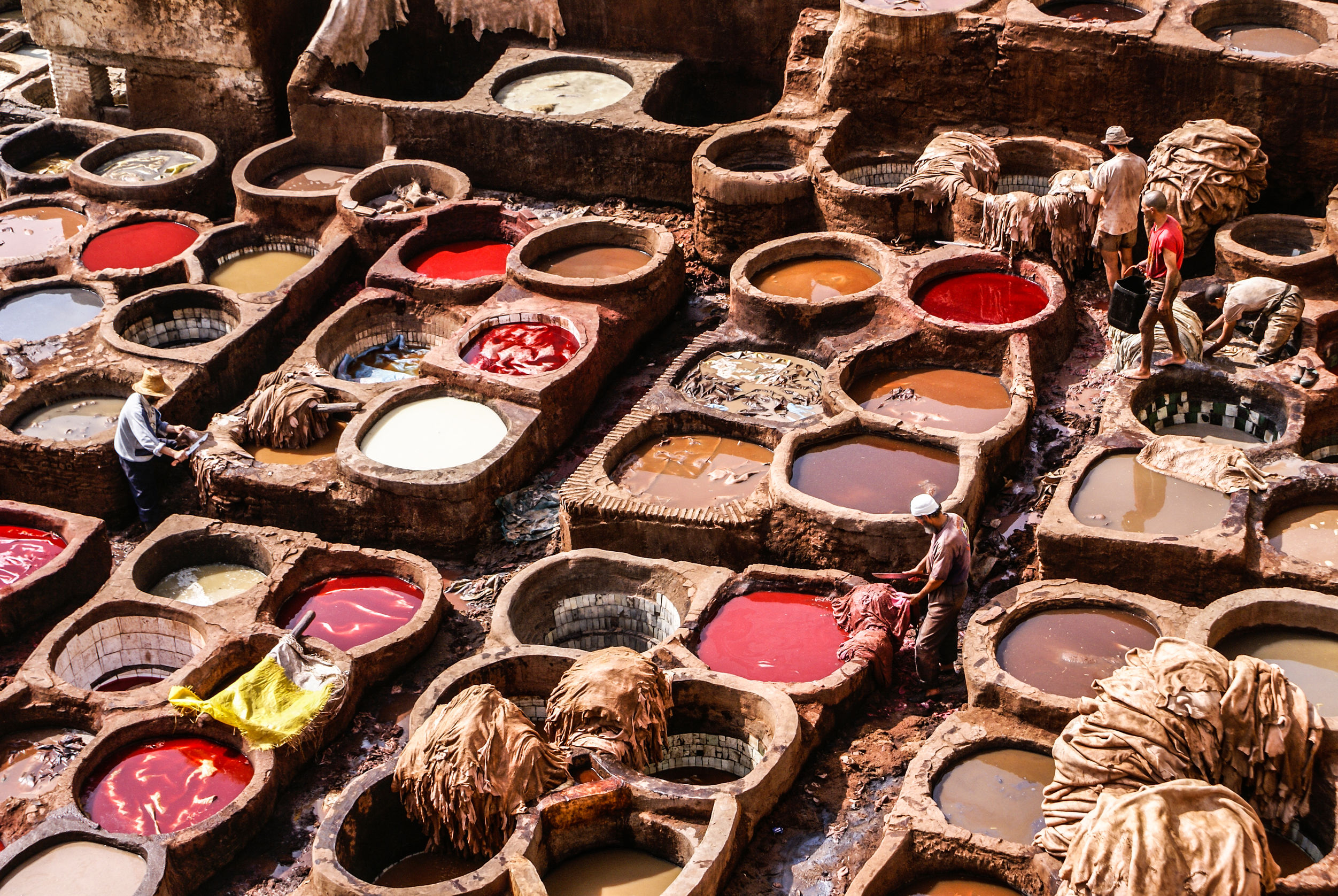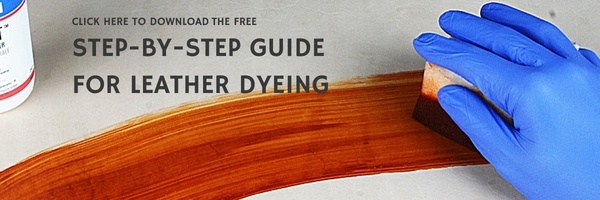Leather dye is a mixture of substances and dyes that are used for leather coloring.
The basic process of coloring a material is in itself very simple: soak the material in a mixture of water and coloring substances, this will help the fibers to absorb the mixture.
Color is nothing more than the ability of a substance to reflect only a few wavelengths of light, so once the leather fibers are completely impregnated with this substance they will have a certain color.
Historically, archeologists have found clear traces of the dyeing process that can be dated to the Neolithic period. The first findings of colored fabrics date back to China in 5,000 A.C. so well before the vegetable tanning process was developed by the Sumerians.
At that time the only known dyes were the dyes of natural origin, such as the orange of the Pomegranate, the Blue with the Indigo leaves, the Yellow from the Turmeric or the pistils of Saffron, the Red from the Cochineal, etc.
To color a fabric it was necessary for the dyes to penetrate the textile fibers. The process of coloring a material was made by transfer. Generally the coloring substances were mixed with water and in this mixture was immersed the textile fiber that was then colored.
Even in veg-tanned leather, the process requires raw leather to be immersed in a mixture of water and vegetable substances. By adding to this mixture also natural coloring substances it was possible to proceed with the first leather coloring process.

Initially, leather was mainly employed for the production of objects that were used in daily works, as in agriculture, in livestock, etc. so the esthetic aspect was not important. The color that was transferred to vegetable-tanned leather depended on the type of wood used in the tanning process: the camping wood gave a reddish-brown color, the Sandal wood for a reddish color, or the punch wood for a reddish-yellow color. The color of the leather was therefore limited to some natural dyes, also because the leather was still not present in the fashion world, so the need was not perceived.
With the progress, the tanning industry has started to introduce dyes of synthetic origin in its tanning phases, thus becoming able to create the most diverse finishes and satisfy the requests of the most imaginative designers.
For leather craftsmen nowadays it is possible to buy leather already colored directly from the tannery, the most experts knows how to dye leather by themselves using leather dyes for professional use.



